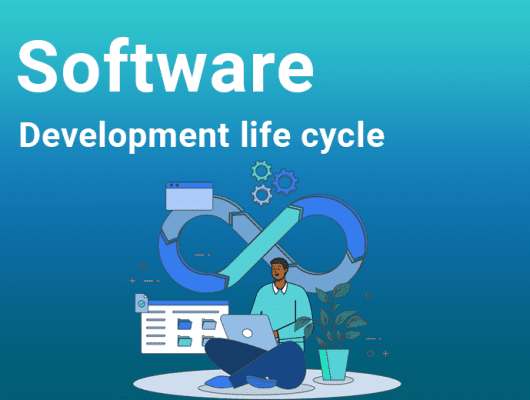
How To Make A Social Media App In 2024 (An Ultimate Guide)
In the competitive world of 2024, social media continues to be a powerhouse for business marketing, offering unparalleled reach and engagement opportunities. But it is already crowded with the dominant and skilled professionals.
So, how to retain your place while creating a social media app from scratch? Is it possible to stand out amidst the tech professionals and create an app that resonates with users globally? Want to know
Well fear not, as this ultimate guide has provided you with the 12 steps that help you to make a high-quality app.
Therefore, without wasting the time, let’s spill the beans.
Table of Contents
12 Steps To Follow While Making Social Media App
- Understanding the Market and Its Potential for Social Media App
- Define Your Target audience
- Understanding the Types of Social Media Apps
- Choosing the right category for your app
- User Interface and Experience
- Keeping in view the key Features of Social Media Apps
- Development Process and Strategies
- Selecting a Revenue Generation Strategy
- Analyzing the cost to build a social media app
- Launch and Marketing Strategies
- Post-Launch: Analyzing, Providing Feedback, and Interacting
- Selecting a Technology Stack for Social Media App Development
Step 1: Understanding The Market And Its Potential For Social Media App
Globally, people use social media for two hours and twenty-five minutes every day. Specifically speaking, Americans spend an average of two hours and thirty minutes a day on social media applications.
Note that
Facebook and YouTube are the most popular platforms, with WhatsApp, Instagram, Facebook Messenger, and others also having many users. Here is a brief summary of the top ten market leaders based on monthly active users:
- 3.07 billion on Facebook
- 3.0 billion views on YouTube
- 2.78 billion use WhatsApp
- 2.4 billion use Instagram
- Messenger on Facebook: 931 million
Over half of the world’s population uses social media, and almost all users access these platforms through mobile apps.
So, Instead of ‘simply creating another app’ in a competitive industry, a new app must have a unique proposition
Therefore, it is necessary to analyze the market properly. It will help in setting the goals toward app development that make it stand out from the competition.
Step 2: Define Your Target Audience
To create a popular social network app, you need to research the market and choose the right audience.
Here are some important steps to follow before starting to develop a social media app.
i) Identifying A Niche
Various types of social media apps might target different niches at the same time. For example, you could create an app for the doctors or go with creating it for the chefs. Alternatively, you can create an app that caters to various groups of people.
ii) Determine Your Target Audience
Before selecting the niche, here comes another crucial step “ for whom you are creating the app”. Therefore, to choose your target audience, look into
- Age
- Profession
- Area of interest
- Gender etc.
You can create a social media site for doctors to talk about work and share information. Or you can create a gaming app for the teens that not only become their source of entertainment but also allow them to interact.
Step 3: Understanding The Types Of Social Media Apps
Before beginning to design your social apps, It’s crucial to comprehend the main app categories. With this knowledge, you can better prepare for market research when developing a social media app.
Let’s examine and draw some ideas from some of the most popular categories of social media applications.
| App Type | Features | Example |
| Social networks | Primary purpose is to link people and form communities.Means of information sharing and social interaction over the internet. | TwitterLinkedinFacebookInstagram etc. |
| Media sharing networks | Enables you to share various types of media files (photo, video, GIF, and so on). | TiktokVimeoYoutube |
| Discussion forums | Allow users to initiate conversations, post questions, and get responses from other users. These types of forums may be general or specialized. | QuoraReddit |
| Content review networks | These types of apps allow users to review businesses, brands, goods, cafes, restaurants, etc. | YelpTripAdvisor. |
| Content sharing networks | These network sites allow the people to exchange content, becoming a source of inspiration and original ideas. | Flipboard PinterestSoundcloud Goodreads |
| Networks of relationships | Helping users find dates and meet new people is their primary objective. | BadooTinder |
| Networks for Blogging and Publishing | These are blog or article sharing websites. They are easy to design without the need of special understanding of coding. It includes websites like | MediumWordpress Tumblr |
Step 4: Choosing The Right Category For Your App
There are now many solutions accessible to construct social network apps quickly, thanks to the rapid technology. But, to make your mark in the competitive world, you must choose the right category for your app.
So, here are the four options, each with its pros and cons.
a) SaaS Solution
You can create your own social network on the internet and mobile devices. You can do this using SaaS platforms like Disciple. These platforms offer ready-to-use features. It allows you to customize the style and design and monetize your content based on your choices.
b) Open-Source Software
You can download and set up open-source software on your server. Both paid and free choices are available. Although they provide additional personalization options, they will incur a developer’s cost and hosting fees. Additionally, it does not allow you automatic software upgrades or customer support.
c) CMS With A Social Network Extension
You can make a social media app or website with plugins using CMS like Drupal or WordPress. Although you can download their plugin for free, but you may experience the bugs. Additionally, They also work better on a social media website than an app.
d) Develop From Scratch
If you want to create an app with whole new ideas, then the most suitable option is to create it from scratch. You need assistance from a specialized app development company to give life to your ideas. But, it might upset your budget because this process is time and budget-consuming.
Step 5: User Interface And Experience
Next step is to create a user-friendly app. So, making a social media app that is intuitive, easy to use, and appeals to your target audience.
Here are some best practices to consider when designing the app’s appearance.
- Create a simple app design for a better user experience.
- Ensure the app’s design is consistent on mobile and web to prevent confusion.
- Allow users to share information and add personality to their profiles.
- Tailor the colors to your brand requirements for a consistent user experience.
Remember, the more simple and organized the app will be, the more it will attract the users.
Step 6: Keeping In View The Key Features Of Social Media Apps
When you start making your social app, it’s common to feel overwhelmed by its many functions and features. However, understand your restrictions, money, and development abilities first to guarantee proper integration of features of the app.
Here are the necessary features to add to the social media app.
- User profile: A personal profile includes personal information such as the user’s name, photo, and location. Depending on the program, the user profile may include information such as interests, personal preferences, current activity, etc.
- Sign up: Use sign up where users can join using email and password, google, Facebook, or phone registration.
- Content: Your app needs to add different types of content to the social media app, like videos, pictures, and GIFs. The editing capability will increase the app’s appeal to users by removing the need for third-party editing solutions.
- Search: Users can utilize the search function to rapidly locate groups, content, persons, and other information on the app.
- Interaction with the app: Social media draws users because they can interact within the apps. Some of the features are comments, likes, reposts, and responses.
- Notifications: The system alerts users when there are new updates, posts, subscriptions, or friend requests.
- In- app messages: Users can send private messages through in-app messaging that others cannot see. It is an optional feature.
- Analytics is a tool that shows a dashboard with data like in-app messages.
I) Use Of Advanced Features
Here are some additional features that make your app talk of the town.
- Augmented reality and face filters: Remember Instagram and Snapchat and think of the face filters they provide. This is what makes these apps unique. So, adding these features draws millions of attention.
- AI chatbots help businesses advertise to corporate customers.
- Live streaming: Live streaming functionality can be an excellent app addition.
- Other features include buy buttons, short video clips, and setting up of the stories just like Snap and Instagram.
Step 7: Development Process And Strategies

After you’ve defined your app’s key features and functionality, you can begin designing and creating it. But before you begin, determine whether you want to create your app for Android, iOS, or both. Remember, both Android and Apple use distinct technical stacks.
Now, once you have determined your target device, here are the steps to follow
i) Sketching
The very first step in the development process is sketching. So, clearly outline the road map for creating the app. This will assist your entire team in visualizing what the program is about and how to make it.
ii) Wire Framing
This phase is important in design as it helps the team imagine the basic structure of social media apps. It provides an organized picture of the app and the end-user’s experience.
iii) Prototyping
A prototype is a working model of a future application. It improves both the customer’s and developers’ comprehension of the product.
iv) Create App Skins
At this stage, that allows the team to work on the skeletal structure of the application. To deliver the finest possible solutions, examine existing solutions, monitor current trends, and develop UI/UX.
v) App development
Now after the completion of the design phase, it’s time to move on to the development process. This phase is divided into two parts i.e frontend development and backend development.
Backend development includes creating databases and server objects to ensure smooth app functioning. Whereas frontend focuses more on user experience and user interface.
vi) App testing
After development, the app then passes to the testing phase that helps to know the quality and performance of the application. This stage includes a number of testing such as functional testing, usability testing, and performance testing to identify and fix any bugs or issues.
vii) Deployment
After thorough testing, the app is ready for deployment. This phase involves publishing the app on platforms like the Apple App Store or Google Play Store, making it available to users. It also includes monitoring the app’s performance, gathering user feedback, and making necessary updates to enhance its functionality and user experience.
Step 8: Selecting a Revenue Generation Strategy
Once you develop your app, make sure that social media attracts millions of users and becomes a source of profit. This means that it’s critical to select a business plan that promotes long-term growth while keeping revenue in mind. Here are some standard business models found in social media apps.
a) Freemium Business Model
The freemium model allows customers to sign up for free and access many essential functions. Premium services, on the other hand, are exclusively available to paying members.
b) Marketing Model
Many social media platforms rely on advertising to generate cash. Using a data-driven approach, the objective is rapidly expanding the user base and targeting people with relevant adverts.
To appeal to marketers, ensure your app collects personal information such as age, gender, location, and interests.
c) Purchases Made Through The App
Some social media sites let users buy stickers or filters to use in the app, in order to make money. Therefore, feature your app for in-app purchases to earn maximum revenue.
Step 9: Costs And Budgeting
The cost of developing a social networking app varies based on the path you take in terms of development.
For example, choose a SaaS or CMS solution. Their expense and time will be lower than using open-source software, which includes software cost, developer expense, and hosting.
Remember that the cost to create an app for iOS or Android ranges from $94,500 for one platform (iOS or Android) to $152,850 for both.
Apart from this, the cost also varies depending on the location of app developers. The following are the average per-hour rates charged in various locations.
- US market $150
- Eastern Europe $50
- India $20
- Africa $30
- Asia $25
Step 10: Launch and Marketing Strategies
After app development, you might wonder what the best practices are to get the users’ attention. Here are some of the best strategies to get people to download your app:
- Use bright banners on your website to direct customers to your app store page for installation.
- Make different types of content like blogs, pictures, videos, or books that match what your clients like. Additionally, encourage them to join your app.
- You can promote your app on social media or a big email list to encourage people to use it.
- You can use Google Ads or ads on other social networks to drive interest in your app.
- If you know of any influencers that would be a good fit for your app, reach out to them, as they are the best source to attract the audience.
- Use in-app messages to encourage your most active users to invite their friends.
Step 11: Post-Launch: Analysis, Feedback, and Interaction

Launching the social media app is the first step toward developing a successful product. The next step is to collect user feedback on the MVP. User input can assist you in determining what’s missing and what’s working in the app.
So, get user feedback, as it will help you improve your app’s functionality for a better experience.
Step 12: Selecting A Technology Stack For Social Media App Development
It is easier to understand how to create a social network app by understanding the technology underpinning such apps. Here’s a rundown of the technologies you require for app development.
i) Analytics And KPIs
Tracking app results is just as crucial as development. Metrics and KPIs assist you in understanding how the app functions regarding user acquisition, retention, and revenue generation.
Here are important metrics and KPIs for mobile apps, divided into user engagement and income.
a) Metrics And Key Performance Indicators For User Engagement
This group’s metrics aid in understanding how the app performs regarding users, engagement, and retention.
After releasing the app, you should monitor the following metrics to determine its significance.
- Tracking installs and uninstalls: It will help you understand how many users join up for your applications and how many stop using them. It allows you to discover why people stopped using your app.
- User activation: This indicator indicates whether or not trial users became active users of an application. For example, posting, sending messages, and uploading videos ensure user activation.
- User retention: It allows you to identify app success by accessing the installation.
- Churn rate: it represents the number of users who stopped using your app.
- Session duration: It demonstrates how much time people spend on your application.
b) Revenue-Related KPIs and Metrics
Revenue-focused indicators show how the app generates revenue. Here are some of the measures to keep an eye out for.
Cost Per Install (CPI): It allows you to determine how much each app installation costs.
Customer Acquisition Cost (CAC): This statistic calculates the total cost of obtaining a new customer. It considers all expenditures, including advertising, marketing, and other costs.
Burn rate: It tells about the money a company spends on staff, sales, marketing or other operations each month.
Average Revenue Per User (ARPU): It displays the average revenue generated by each user. This KPI enables you to examine your revenue model and determine its performance.
Final Crux
Creating a successful social media app requires a proper understanding of the market, audience, value proposition, design, etc. Therefore, consider following all the steps above to make a mark in 2024 with your app. However, if you are looking forward to hiring a social media app development company but are concerned about your budget, do not worry because Onyxtec has your back. We are a team of experts who create high-quality apps within a budget and timeline.
FAQ
Which social media apps have the highest popularity?
Facebook, YouTube, WhatsApp, Instagram, Messenger, WeChat, and TikTok are the leading apps with billions of users who are active on a monthly basis.
Do you need help to create a social media app?
Developing an app is pretty straightforward; however, planning and strategizing the app is challenging.




